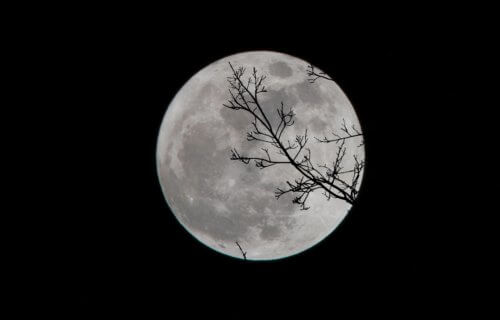MOUNTAIN VIEW, Calif. — The Moon may not be made of cheese, like the old myth believed, but it’s not the barren and dusty rock it appears to be. For the first time ever, NASA has confirmed that there is water on the sunlit side of the Moon’s surface.
NASA’s Stratospheric Observatory for Infrared Astronomy (SOFIA) made the discovery while flying 45,000 feet above the Earth in a modified Boeing 747SP jetliner. Inside the aircraft is a 106-inch diameter telescope that can scan the Moon’s surface using an infrared camera.
The surprising find was uncovered in the sunny Clavius Crater, one of the largest craters visible from our planet. Until now, scientists weren’t able to determine if the readings were water molecules or H2O’s close chemical relative, hydroxyl (OH). SOFIA’s data reveals there’s about 100 to 412 parts per million of water in the crater. That’s about the same as a 12-ounce bottle trapped inside a cubic meter of soil.
“We had indications that H2O – the familiar water we know – might be present on the sunlit side of the Moon,” says NASA’s Paul Hertz in an agency release. “Now we know it is there. This discovery challenges our understanding of the lunar surface and raises intriguing questions about resources relevant for deep space exploration.”
Changing the story of the Moon
SOFIA’s discovery rewrites some of the history NASA and the scientific community have made over the last six decades. When the Apollo astronauts first landed on Earth’s lone satellite in 1969, humans thought it was a completely dry rock.
Over the last 20 years, missions including NASA’s Lunar Crater Observation and Sensing Satellite have uncovered ice hidden in the Moon’s permanently shadowed craters. These pools sit at the poles and don’t see sunlight like Clavius Crater.
Before SOFIA, NASA’s ground-based Infrared Telescope Facility and other spacecraft have been broadly scanning the Moon’s sunnier regions for more signs of water. These missions couldn’t distinguish between H2O and OH however.
“Prior to the SOFIA observations, we knew there was some kind of hydration,” says study lead author Casey Honniball from the University of Hawaii at Mānoa. “But we didn’t know how much, if any, was actually water molecules – like we drink every day – or something more like drain cleaner.”
What’s putting water on the Moon?
Researchers say there are a few reasons water is trapped in the soil. Micrometeorites may be raining down on the lunar surface and depositing water molecules.
NASA also believes a two-step process may be taking place on the Moon’s sunny side. First, solar wind might be delivering hydrogen to the surface which mixes with oxygen-bearing minerals in the soil. Then, once hydroxyl is formed, radiation from more micrometeorites may be helping to transform OH into H2O.
However water got up there, NASA says it was sheer luck SOFIA found it there. The telescope-carrying aircraft was only pointing at the lunar surface as part of a test for deeper space exploration.
“It was, in fact, the first time SOFIA has looked at the Moon, and we weren’t even completely sure if we would get reliable data, but questions about the Moon’s water compelled us to try,” explains SOFIA’s project scientist Naseem Rangwala. “It’s incredible that this discovery came out of what was essentially a test, and now that we know we can do this, we’re planning more flights to do more observations.”
SOFIA’s next flights will continue looking for water in other sunlit locations and also during different lunar phases.
The study appears in the journal Nature Astronomy.
https://www.youtube.com/watch?v=U70y8ypCbyA&feature=emb_title
